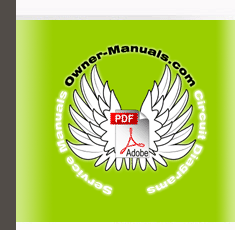|
|
|
Categories
|
|
Information
|
|
Featured Product
|
|
|
 |
|
|
There are currently no product reviews.
 ;
This manual covers the main equipment features only. While it also includes the procedure for saving and loading from the now long obsolete memory cards it does not mention the how to operate with the optional floppy drive interface so I am still at a loss about how to use this! Note that there is a separate manual covering the MIDI interface and programming via the keyboard, not included in this download. You will also need to get hold of this if you want to use the MIDI interface properly. Basically there is little difference between this manual and the free to download manual for the similar PR60 model.
 ;
Good list of manuals. I found a very rare one and easily get. Should be promptly to download, as we must to wait hours even after confirmed payment.
 ;
The manual was properly scanned and perfectly readable. The only small problem is that I couldn't use my dear Ctrl + F to find a word I needed.
 ;
Nothing wrong with the manual or the delivery - came to me the same day I ordered it. But afterwards I realized that I ordered the wrong manual. Probably better with the Quick start - version. So maybe it would be better if we could see a list with inhold for each manual before ordering?
 ;
Bought T4850 High End Tuner a few years ago, but i didn't know where all the buttons were used for. So i purchased the owners manual. Perfect! Just what i needed.
Sampler functions
Recording samples NOTE for S1000PB users: The following sections do not apply to the S1000PB. Please ignore these sections, and resume at the section headed "SELECT SAMPLE (S1000PB only)" (page 49). When you start sampling, you must have a clean area of memory to do it, and enough memory to work in. In sampling, it is better to start with too much memory space than too little. You can always "top and tail" a sample later on, but you cannot create memory out of thin sir.
Restart your S1000. Press the EDIT SAMPLE button, and you are in a position to start recording and editing a blank sample, whose name defaults to "NEW SAMPLE". The first thing to do is to name the sample. Give it a meaningful name of up to 12 characters for a mono sample - 10 characters for stereo (press NAME and use the other buttons to enter a name ENT/PLAY when done). A name such as "HUGHS SAMPLE" will mean nothing in a month's time, while "HUGHS BASS" will at least tell you what kind of instrument the sample refers to. The reason why 2 fewer characters are allowed in a stereo sample is that the S1000 automatically adds "-L" and "-R" to the two sample names when creating a sample, and any characters you add in the 11th and 12th positions will automatically be overwritten. Now COPY the NEW SAMPLE to your work area with the name you've just entered. The "monitoring program" can be set to either MONITOR or a program name. This enables you choose what sound will be heard when you press ENT/PLAY button. Usually, you should set this to MONITOR. While we're in this page, let's look at the other facilities provided. In addition to access the REC1, REC2, ED.1 and ED.2 pages (of which, more later), you can also copy, rename, or delete the chosen sample (as displayed on the top line) from memory. Note that these three last operations do not affect the samples as stored on disk. If you delete a sample from memory, this will not delete it from disk. Of course, if you have not previously stored a sample to disk before deleting it from memory, that's the end of your sample! To copy a sample to another area of memory, use the NAME button to enter a new name (and then confirm it with the ENT/PLAY button). Then press the COPY button. A copy of the original sample will now be stored in memory under the new name. If there is not enough memory to store the new copy, the display will show this when you press the COPY button. Renaming follows the same procedure - enter a new name, and then press the REN button. The original sample will still be there in the same place in memory, but under a new name. Pressing the DEL.
Page 32
Version 2.0 89/11
|
|
 |
> |
|
